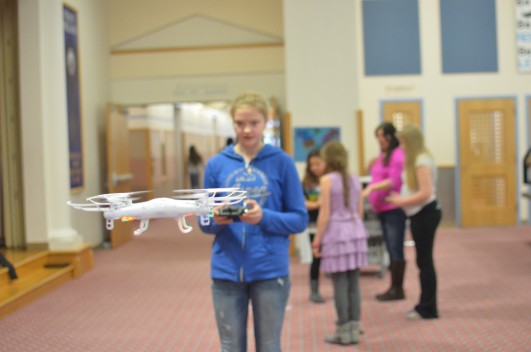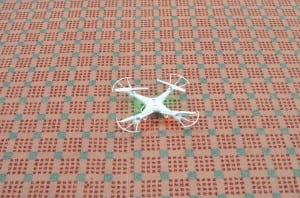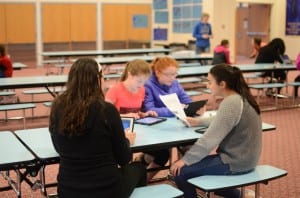For the past few months, sixth graders at Point Higgins Elementary have been learning about earthquakes, tsunamis and flying drones as a part of a tsunami marine debris monitoring program.
Point Higgins Elementary has two sixth-grade classes, and they work separately throughout the week. But, on Friday after lunch, the two classes combine. Teachers and students like Carson Cowan said it’s a good way to end the week.
“It’s good to be not working a whole lot on math and stuff like that all the time. It’s better to get a break.”
Teacher Janice Wood said the tsunami debris project doesn’t cost the school a dime, and the curriculum ties in with state standards. The break from the ordinary proves to be a great incentive for students.
Not everyone gets a chance to fly the drones every week, but it is the highlight. Students have a list of flying skills to master. Hannah Moody reads the upcoming task to her group.
“From your home point fly to center point 10 feet away. Maintain a five foot altitude throughout your challenge and hover for five seconds. Fly forward five feet, hover for five seconds, return to your center point. Wow.”
The drone has four spinning blades and is about as big as a school notebook. The girls give it a whirl using a hand-held controller.
Jordyn Smith says she could tell she was getting better. “It’s kind of hard to keep it in one spot and keep it from running into people. My brother has helicopters but I’ve never flown them.”
Every two weeks, the groups rotate through other stations where they research and prepare presentations on related topics, such as tectonic plates, earthquakes and tsunamis.
Julia Spigai is working on her iPad. “ Yes, I knew that they were big waves , but I didn’t know all this information yet, like how fast they can go. Travel 800 miles and at a speed of 500 miles per hour, the speed of a plane. I was shocked when I heard that like, wow, I don’t want to be in a tsunami.”
On that note, she also included ways to stay safe during a tsunami including information specific to Ketchikan.
Teacher Marisa Frey says working on the iPad is developing another important skill set. “They’re practicing using their Google accounts that the district provides. So, they’re working on emailing, which will be a huge skill for them next year. So, that’s really good practice sending big documents like that to us and sharing it.”
Over the summer, both teachers got some flying lessons so they could teach, but say the students overall are doing much better than they did.
Carson Cowan thinks he may be the best pilot at the school, having completed five out of the 12 levels. His secret? “I guess just not playing a whole lot of video games because it’s really touchy. An Xbox controller they’re not real sensitive because you have to move the joy stick a lot more than you do with these.”
The program is supposed to continue all the way through high school, where students eventually will upgrade to more expensive drones with cameras to map otherwise hard-to-reach coast line, and catalog debris.
For now though, they are working on the basics.








